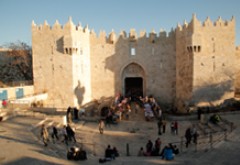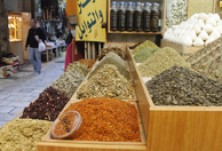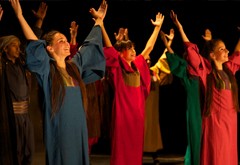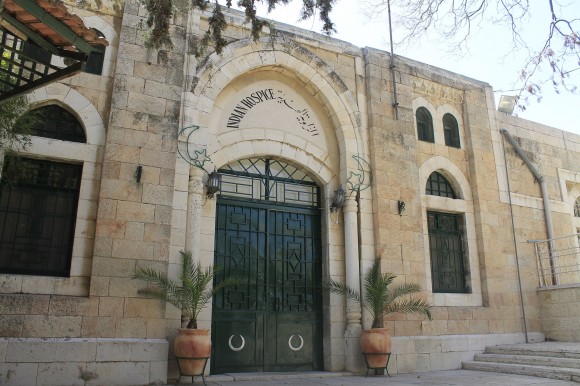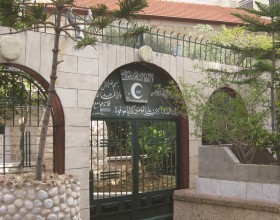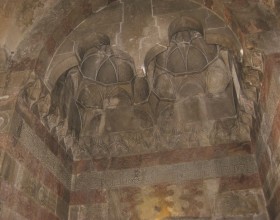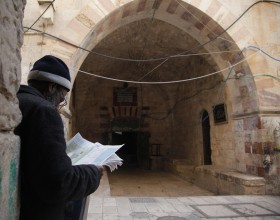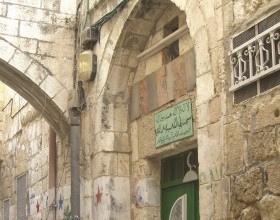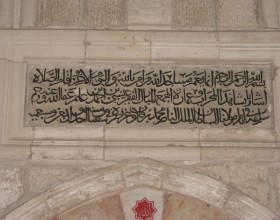Paths And Trails
Sufi Institutions and Religious Schools
In addition to the different types of Christian monasticism, various types of Islamic Sufi groups prospered in Jerusalem, and dozens of Sufi centers were established in the city. Islamic schools also prospered in the Jerusalem, with a sharp increase in their numbers during the Mamluk period, turning the Old City into one large educational institute.
Trail’s Nature and Stations
The subject of this trail is the Sufi institutions in Jerusalem. Although Sufism has disappeared in the city, its institutions have remained testament to the role that Sufism played in Jerusalemite society.
The trail starts outside the Old City walls at Bab al-‘Amud (Damascus Gate) Bus Station, and ends in the Christian Quarter in the heart of the Old City. It takes between two and a half and three hours to complete, and has very few special requirements. A flashlight to illuminate some relatively dark corners would prove helpful. The trail includes three Sufi types of institutions, namely, al-Zawiya,al-Khanqa, and al-Ribat.
Trail Stations
1- Al-Zawiya al-Adhamiyya
2- Al-Khanqa al-Dawadariyya
3- Al-Zawiya al-Qadiriyya
4- Al-Ribat al-Mansuri
5- Al-Zawiya al-Qirarmiyya
6- Al-Khanqa al-Salahiyya
Introduction
Linguistically, al-zawiya is a corner. In practice, it is a location which brings people together. The term al-Zawiya was used to indicate areas or corners where Sufis congregated or found shelter. Institutions of knowledge and learning started in large mosques but moved out, gaining independence.
Al-Khanqa is a Persian word which means home and was initially used to indicate places where Sufis sought seclusion to worship and recite the Quran. In Mamluk literature and documents, al-Khanqa mean a mosque and aSufi home, which may have had a school or dormitory attached to them
In addition to al-Khanqa and al-Zawiya, some Sufi buildings were known as ribat, an Arabic word indicating standing steadfast along borders and strongholds. Some historians are confused among al-Khanqa, al-Zawiya, and al-Ribat. al-Maqrizi, an Egyptian Mamluk-era historian and a Sunni, refers to them all as Sufi homes. But if al-Ribat is inside a city and not along the border strongholds, then it is a building allocated for the poor, and sometimes for widows or divorced women. With time, there became a certain level of similarity among residents of these three Sufi types of homes.
Differences among Sufi Institutions
Regardless of the names given to Sufi buildings, there is no large variation in the architectural plan or the administrative and financial system of these buildings. Al-Ribat, however, is distinguished in that it is a shelter for the poor, referred to as ‘Mujawirin’ (neighbors). Khanqas are normally larger in size than Zawiyas, with larger property and higher revenues. Hence, the responsibilities of those managing them, in terms of studies, worshipping, and reciting are more detailed. Al-Khanqa, al-Zawiya, and al-Ribat are architectural units whose residents dedicate their time to worshiping and reciting the Quran, according to specific conditions set by the donor and overseen by a inspector who runs their daily life and worshiping affairs.
Naturally, each institution, era, or establishment had its own circumstances, reflected in the Sufi institution’s details, in terms of material capacities and architectural plan, with all its ornamental and artistic details. Although such differences may occur, the Sufi establishment, whether a Khanqa, Zawiya, or Ribat, should include, architecturally, the following facilities:
- A group of small rooms providing an atmosphere of seclusion and individuality for the Sufi. These are normally referred to as hermitages or cells.
- A large hall for plenary meetings to recite the Quran, listen to dhikr (supplication) and sma’(chanting) , and share Sufi sessions.
- There is normally a small mosque for praying, supplication, studying, and preaching, as well as a small kitchen and amenities.
- In most cases, a minaret is attached to the building, due to its Islamic implications and importance in communicating the Zawiya’s activity to the neighborhood. It is the media tool of the Sufi methods.
- An open courtyard, part of which may be a small garden, and a water-gathering well.
Nature of Sufism
Sufism indicates dedication to worshipping Allah (God) the Almighty, shunning the material aspects of life. In this respect, Sufism started with the early stages of Islam, since this is, in fact, how the Prophet Mohammad and his followers conducted their lives. Due to Jerusalem’s religious position in Islam, large groups of worshipers and dedicated Muslims made it their destination. Mujir al-Din, Jerusalem’s prominent historian, compiled a large list of such dedicated worshippers who lived in Jerusalem after the Islamic conquest.
Stages of Sufism in Islam
Sufism in Islam passed through a number of stages and roles. At the beginning, mosques and private homes were centers for Sufism and its patrons. Later, a common Sufism developed, requiring a mother institution with specific regulations. The features of this development in Jerusalem started to appear in the Ayyubid era, expanding and developing into varied forms of institutions in the Mamluk and Ottoman era.
Sufi Traditions
Sufism in Islam followed numerous traditions and rituals, reflecting on the daily lives and activities of Sufis in Jerusalem. Sufism flourished particularly in the Mamluk and Ottoman eras. Among its traditions are the Rifa’iyya order, developed by Shaikh Ahmad ibn Ali al-Rifa’i, the qadiriyya order, developed by ‘Abedal-Qader al-Jilani, the Maulawiyya order, developed by Mauwlana Jalal al-Din Al-Rumi, the Bastamiyya order, after Abi Yazid Tayfour al-Bastami, the Naqshabandiyya order, established by Baha’ al-Din al-Bukhari, and the Shaziliyya Yashrutiyya order established by ‘Ali Nour al-Din al-Yashruti. Other methods include al-“Alawiyya, al-Tijaniyya, al-Wafa’iyya, al-Kalandriyya, and al-Yunisiyya.
Importance of the Waqf System
The Islamic Waqf system, with all its conditions and costs which must be stipulated in the Waqf contract, guarantees a list of reference items which represent a nucleus for the revenues, expenses, salaries, duties, and authorities of those affiliated with this establishment, identifying their relations with the judicial and executive authorities.

